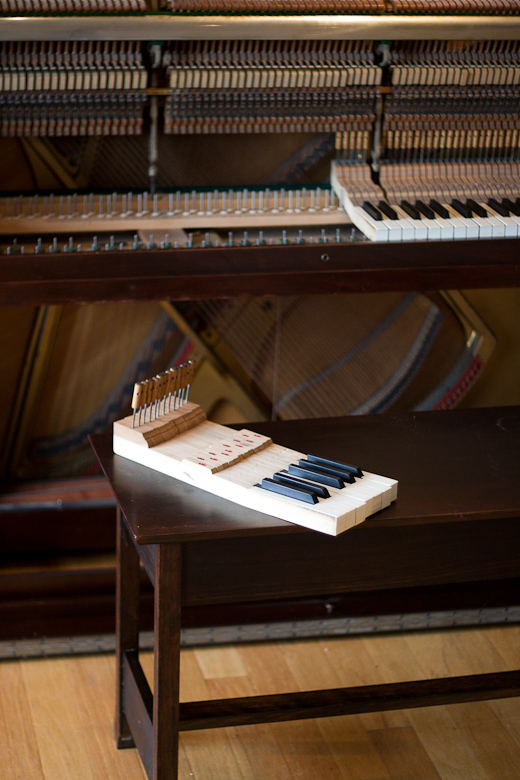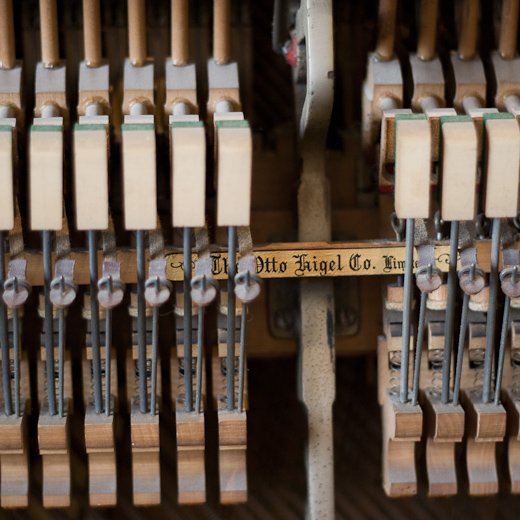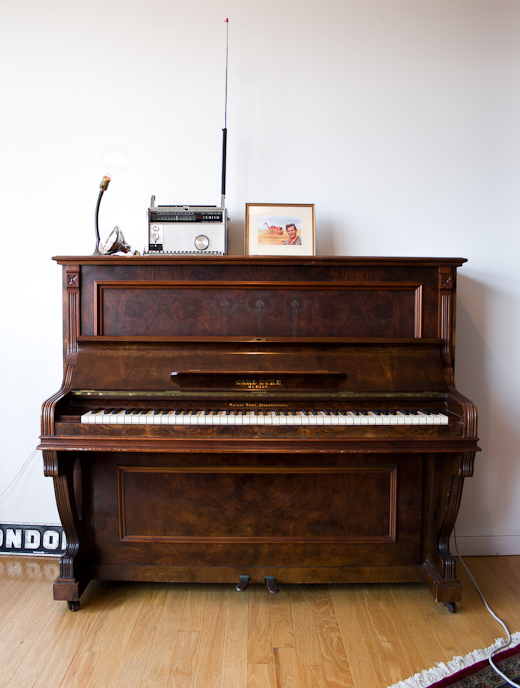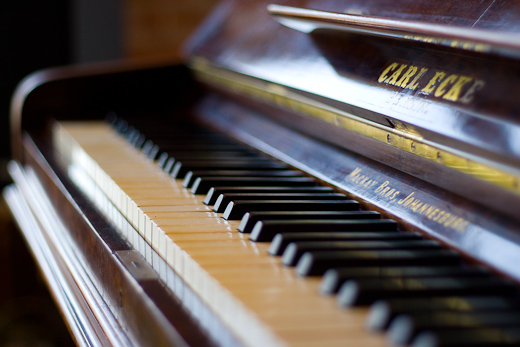Piano Workbench
How I ended up with two pianos in a 700 sq ft apartment
Have you ever noticed that used pianos are basically free? As recently as a couple generations ago, every middle-class household had one so the kids could take piano lessons, and now they're all on craigslist. The cost breakdown is roughly:
- Cost of piano: between free and $500
- Cost of moving it: $150
- Cost of tuning it: $150
Two years ago I found one on Craigslist for $400 including moving. Some guys had delivered a brand new piano to an old woman and taken her old piano away for free. It was already packed into their truck and they were trying to offload it. I had a look, it was absolutely beautiful, made a hundred years ago by Carl Ecke, played fairly well albeit out-of-tune, so I took it. A week later, a piano tuner came by to have a look, and broke the news that he wouldn't be able to tune it. The wood was too old and dry and the tuning pegs were slipping. He tuned middle C and then played it a few times and it slipped right back out of tune. Beware cheap antique pianos on craigslist.
I still wanted a piano, so I found another one for sale. This one was Canadian-made by Matthews Piano Co., and only about 50 years old. It was out of tune, but in way better shape. I got a guy to move it and tune it for $300. Done.
It wasn't easy to get rid of the old one. I briefly tried to give away the old piano on Craigslist. I thought a restaurant might like it for its visual appeal, but no bites. I proceeded to dismantle it. I took the mechanisms apart and experienced the wonder of their 100-year-old engineering. The keys are now half-way to becoming some kind of hanging sculpture. Most of the action was really neat but ultimately not that useful to me.
The rest of the piano frame has become a great little work bench. The top folds back in half and the front panel, the fall, and the lock rail come off. What's left is a work surface that's a couple feet deep and the full width of the piano.
The piano workbench is now home to my electronics puttering. It has a two inch gap at the back of the workspace where excess cables can be hidden in the bottom. I have a power supply hidden down there that powers GND, +5v, and +12v terminals mounted near the back.
When I want the mess of circuitry and electronic carcasses to disappear, I just put all the panels back and it looks like a regular antique piano.









